Welcome to DU!
The truly grassroots left-of-center political community where regular people, not algorithms, drive the discussions and set the standards.
Join the community:
Create a free account
Support DU (and get rid of ads!):
Become a Star Member
Latest Breaking News
General Discussion
The DU Lounge
All Forums
Issue Forums
Culture Forums
Alliance Forums
Region Forums
Support Forums
Help & Search
Celerity
Celerity's Journal
Celerity's Journal
December 5, 2021

















Photos of the Week
https://www.theatlantic.com/photo/2021/12/photos-of-the-week-santa-school-snowy-soccer-dinosaur-lantern/620893/
















December 5, 2021
Swedish recipes for the holidays
use Google translate
https://translate.google.com/ ![]()
I will just show pics, they are easily found at the link
holidaze booze at the bottom ![]()
https://www.koket.se/10-tips-pa-nyarsmeny

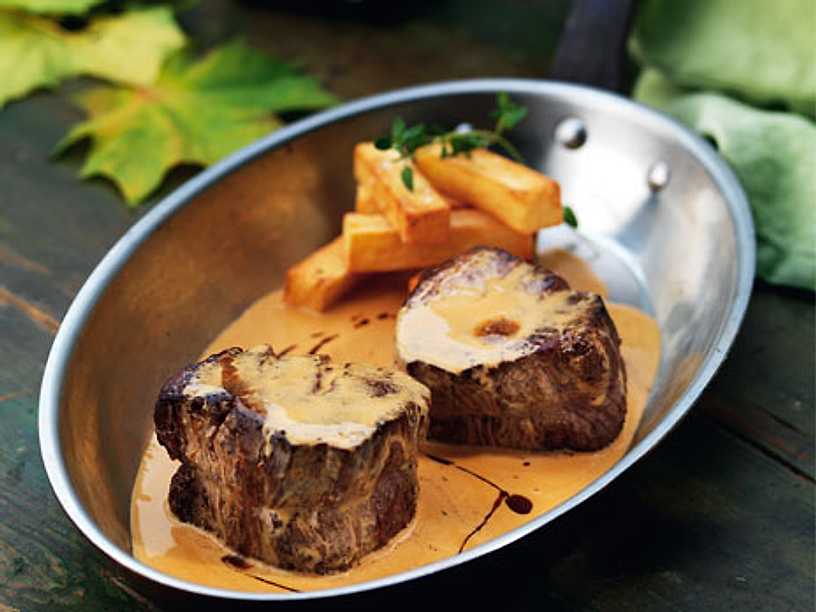



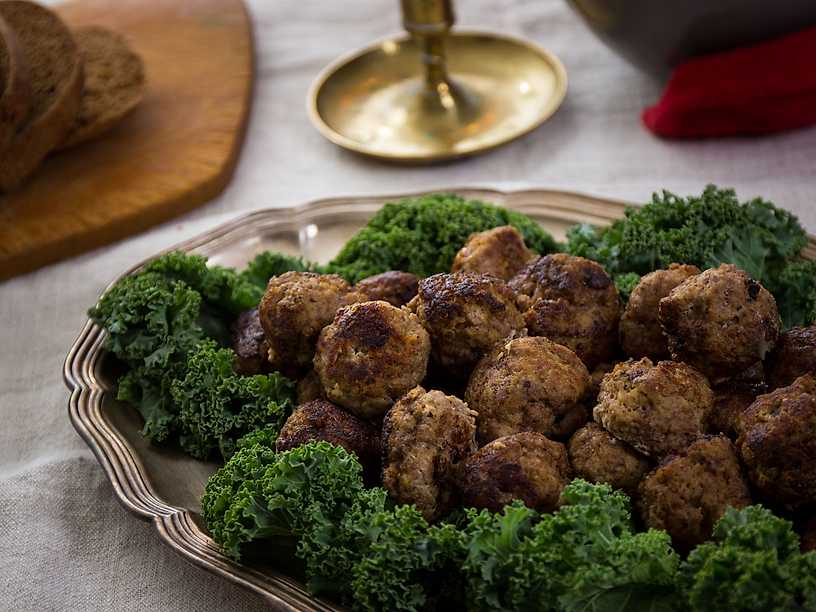



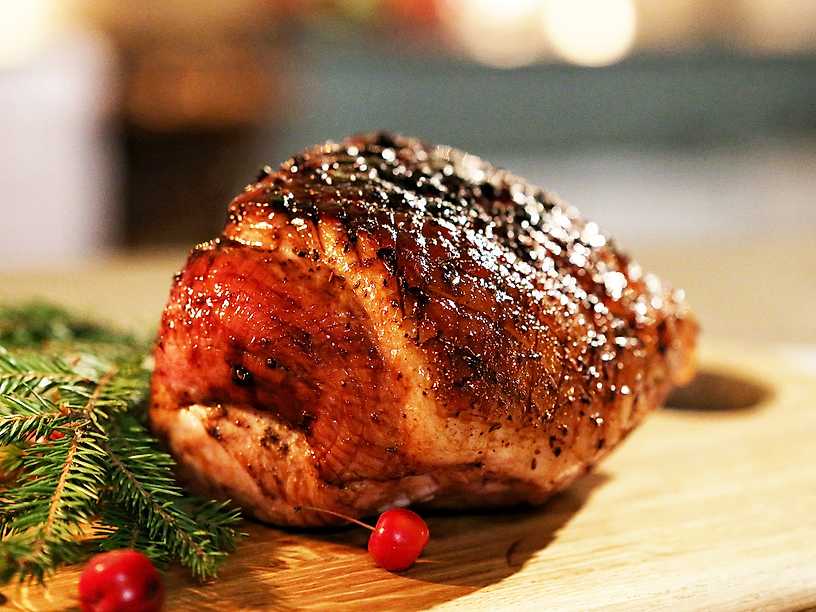






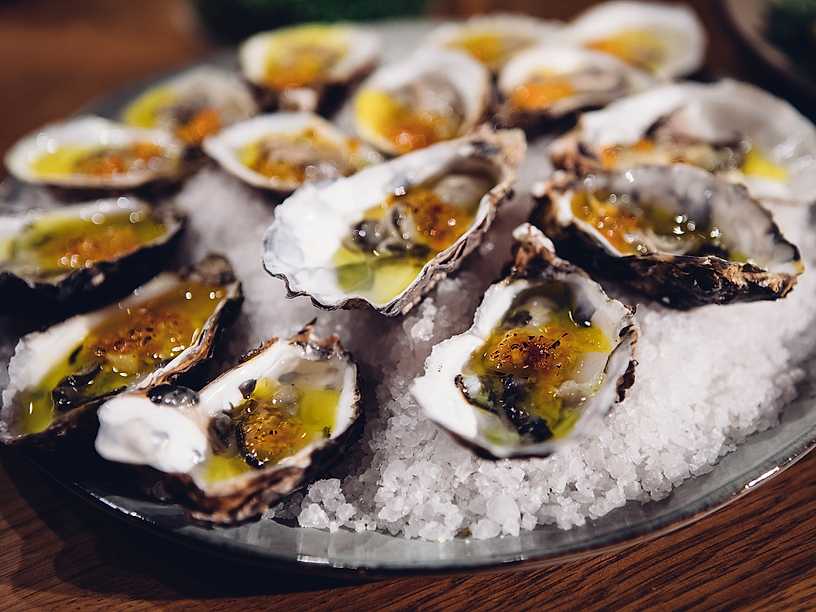
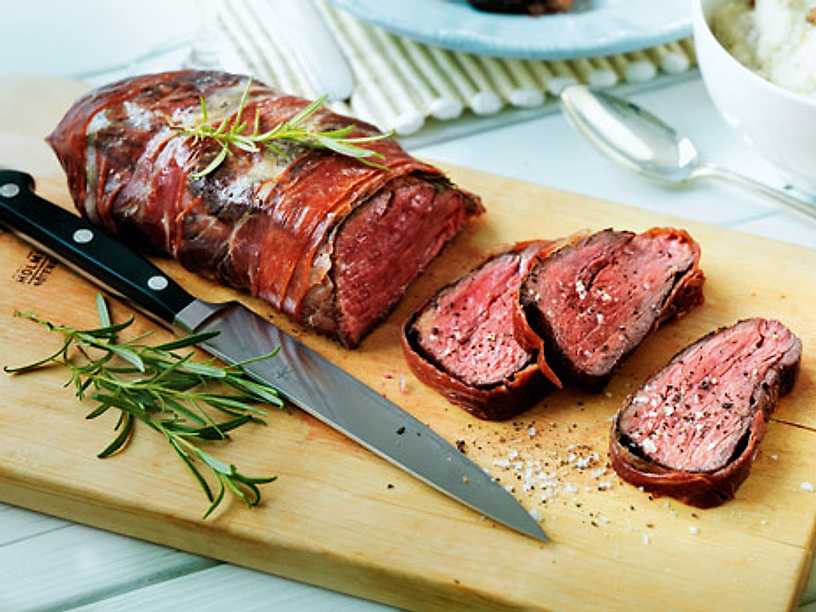

Glögg is a spiced, mulled wine or spirit.
Iscider is Nordic apple wine from late harvest frozen apples, it is soooooooooooo good!💙
https://www.koket.se/har-ar-vinterns-godaste-glogg
Traditionella smaker

Lättglögg & alkoholfritt

Inspiration från naturen

Trendiga smaker

December 5, 2021
https://www.thelocal.se/20211204/swedish-female-empowerment-declaration-blocked-at-osce-council/

Sweden's foreign minister Ann Linde (front right) with other leaders who attended the OSCE council meeting in Stockholm.
Sweden, which invented the concept of “feminist diplomacy” and holds the rotating chairmanship of the Organisation for Security and Co-operation in Europe (OSCE), had tabled the non-binding resolution.
But the text, which has not been made public, was blocked “by Russia and the Vatican”, Swedish Foreign Minister Ann Linde said at the end of a meeting of the organisation in Stockholm.
The declaration, which focused on “the economic empowerment of women”, was intended to affirm the need to strengthen their place in society to promote global security and their role in conflict resolution. Few texts are adopted at the OSCE, because of the requirement for unanimity and the divergent views of its members, especially Moscow. But Sweden had high hopes of getting this text adopted and was surprised to see the Vatican helping to torpedo it.
Moscow and the Holy See “do not agree on working on gender equality issues, which I deeply regret,” Linde said at the final press conference of the OSCE ministerial meeting. “I had really hoped that a decision would be taken on this, I am so disappointed,” she said. Of the 20 or so resolutions prepared by the Swedish during their chairmanship, only one was adopted, on climate.
snip
The Vatican lined up with Russia to block a Swedish proposal to to boost the role of women in
resolving international disputes.https://www.thelocal.se/20211204/swedish-female-empowerment-declaration-blocked-at-osce-council/

Sweden's foreign minister Ann Linde (front right) with other leaders who attended the OSCE council meeting in Stockholm.
Sweden, which invented the concept of “feminist diplomacy” and holds the rotating chairmanship of the Organisation for Security and Co-operation in Europe (OSCE), had tabled the non-binding resolution.
But the text, which has not been made public, was blocked “by Russia and the Vatican”, Swedish Foreign Minister Ann Linde said at the end of a meeting of the organisation in Stockholm.
The declaration, which focused on “the economic empowerment of women”, was intended to affirm the need to strengthen their place in society to promote global security and their role in conflict resolution. Few texts are adopted at the OSCE, because of the requirement for unanimity and the divergent views of its members, especially Moscow. But Sweden had high hopes of getting this text adopted and was surprised to see the Vatican helping to torpedo it.
Moscow and the Holy See “do not agree on working on gender equality issues, which I deeply regret,” Linde said at the final press conference of the OSCE ministerial meeting. “I had really hoped that a decision would be taken on this, I am so disappointed,” she said. Of the 20 or so resolutions prepared by the Swedish during their chairmanship, only one was adopted, on climate.
snip
December 5, 2021
https://www.nytimes.com/2021/12/03/t-magazine/lesbian-representation-tv-film.html

Naima Green’s “Untitled (Riis)” (2017), part of a series the artist made at New York City’s Jacob Riis Park, an L.G.B.T.Q. meeting ground. “I’m thinking about queer waterways,” she says. “The ways that the beach is or can become a site of freedom, pleasure and transience for queer people and how we connect.”
In most parts of the world, to be gay or transgender is to at some point realize that you’ve been taught, to varying degrees, to deny who you are and to feel shame about your desire to love and be loved — to be entitled to a full life. This is true, as well, of queer lives onscreen, where, until very recently, most narratives centered around death, whether it was the trans person too tragic to continue living — either as a result of murder (“Boys Don’t Cry,” 1999) or suicide, a trope that has existed since “Glen or Glenda” (1953), one of the earliest films to highlight transgender issues — or gay men felled by their own murderous impulses (“Cruising,” 1980) and, later on, complications from AIDS, representations of which have regularly treated the disease as a form of punishment.
Then there were lesbian characters. They, too, were subjected to countless onscreen deaths, from Tara on “Buffy the Vampire Slayer” in 2002 to Poussey on “Orange Is the New Black” in 2016, but queer women have also been disappeared in a different way: For nearly a century, affection between two women has often been depicted as unrequited, predatory, transient or otherwise unserious. Just think of the menacing, lonely Mrs. Danvers in Alfred Hitchcock’s “Rebecca” (1940), a famously queer-coded character; or, on a lighter note, Roseanne Barr and Mariel Hemingway on the former’s sitcom in 1994, or Calista Flockhart and Lucy Liu on “Ally McBeal” five years later. All these stories seemed to argue that the ultimate tragedy of lesbianism was that it was a choice, and that smart women, wanting marriage and children, chose otherwise. Such “lesbian kiss episodes,” as they’re derided today, were usually (and unsurprisingly) dreamed up by straight male Hollywood showrunners as a kind of titillation, according to Sarah Kate Ellis, 50, the chief executive officer of GLAAD, who says, “Lesbian storytelling has historically been told through the eyes of men and their experience of that, of their own desire.”

Tara (Amber Benson), left, and Willow (Alyson Hannigan) on “Buffy the Vampire Slayer.”
Now, some two decades later, lesbian portrayals onscreen are finally starting to become deeper, more varied and more inclusive, moving beyond the aspirational (mostly rich, mostly white) women who dominated programs like Showtime’s “The L Word,” which debuted in 2004, or Todd Haynes’s 2015 film, “Carol,” based on “The Price of Salt,” Patricia Highsmith’s 1952 novel of mannered glances, and starring Cate Blanchett as a housewife who must choose between her female love and her daughter.
In the past two years, there have been “The Wilds” (2020), Sarah Streicher’s Amazon Prime video series about a group of teenage girls that doesn’t overly conflate coming out with conflict, as well as indie films like Céline Sciamma’s “Portrait of a Lady on Fire” (2019) and Miranda July’s “Kajillionaire” (2020), wherein love stories orbit around mutual desire rather than shared sexual frustration. In late 2019, when Showtime rebooted “The L Word,” the show was celebrated by fans for its more diverse cast — and more authentic writing, which didn’t shy away from the realities of menstruation, cunnilingus or seething jealousy. Gone was the tragic lesbian, forced to choose between love and a full life; instead, we got unpredictable, messy, complicated lesbian lives. “The ultimate privilege is being able to do anything we want,” says its 36-year-old showrunner, Marja-Lewis Ryan. “We’re getting closer to being able to have characters who are deeply [flawed] and not have them represent all of us.”

The third season of “Master of None” focused on the marriage and relationship between Alicia (Naomi Ackie), left, and Denise (Lena Waithe).
snip
At Long Last, Onscreen Portrayals of Lesbian Relationships Are Getting Complex
The shift comes after decades of stories that minimized romantic love between women as fruitless, or as some kind of phase.https://www.nytimes.com/2021/12/03/t-magazine/lesbian-representation-tv-film.html

Naima Green’s “Untitled (Riis)” (2017), part of a series the artist made at New York City’s Jacob Riis Park, an L.G.B.T.Q. meeting ground. “I’m thinking about queer waterways,” she says. “The ways that the beach is or can become a site of freedom, pleasure and transience for queer people and how we connect.”
In most parts of the world, to be gay or transgender is to at some point realize that you’ve been taught, to varying degrees, to deny who you are and to feel shame about your desire to love and be loved — to be entitled to a full life. This is true, as well, of queer lives onscreen, where, until very recently, most narratives centered around death, whether it was the trans person too tragic to continue living — either as a result of murder (“Boys Don’t Cry,” 1999) or suicide, a trope that has existed since “Glen or Glenda” (1953), one of the earliest films to highlight transgender issues — or gay men felled by their own murderous impulses (“Cruising,” 1980) and, later on, complications from AIDS, representations of which have regularly treated the disease as a form of punishment.
Then there were lesbian characters. They, too, were subjected to countless onscreen deaths, from Tara on “Buffy the Vampire Slayer” in 2002 to Poussey on “Orange Is the New Black” in 2016, but queer women have also been disappeared in a different way: For nearly a century, affection between two women has often been depicted as unrequited, predatory, transient or otherwise unserious. Just think of the menacing, lonely Mrs. Danvers in Alfred Hitchcock’s “Rebecca” (1940), a famously queer-coded character; or, on a lighter note, Roseanne Barr and Mariel Hemingway on the former’s sitcom in 1994, or Calista Flockhart and Lucy Liu on “Ally McBeal” five years later. All these stories seemed to argue that the ultimate tragedy of lesbianism was that it was a choice, and that smart women, wanting marriage and children, chose otherwise. Such “lesbian kiss episodes,” as they’re derided today, were usually (and unsurprisingly) dreamed up by straight male Hollywood showrunners as a kind of titillation, according to Sarah Kate Ellis, 50, the chief executive officer of GLAAD, who says, “Lesbian storytelling has historically been told through the eyes of men and their experience of that, of their own desire.”

Tara (Amber Benson), left, and Willow (Alyson Hannigan) on “Buffy the Vampire Slayer.”
Now, some two decades later, lesbian portrayals onscreen are finally starting to become deeper, more varied and more inclusive, moving beyond the aspirational (mostly rich, mostly white) women who dominated programs like Showtime’s “The L Word,” which debuted in 2004, or Todd Haynes’s 2015 film, “Carol,” based on “The Price of Salt,” Patricia Highsmith’s 1952 novel of mannered glances, and starring Cate Blanchett as a housewife who must choose between her female love and her daughter.
In the past two years, there have been “The Wilds” (2020), Sarah Streicher’s Amazon Prime video series about a group of teenage girls that doesn’t overly conflate coming out with conflict, as well as indie films like Céline Sciamma’s “Portrait of a Lady on Fire” (2019) and Miranda July’s “Kajillionaire” (2020), wherein love stories orbit around mutual desire rather than shared sexual frustration. In late 2019, when Showtime rebooted “The L Word,” the show was celebrated by fans for its more diverse cast — and more authentic writing, which didn’t shy away from the realities of menstruation, cunnilingus or seething jealousy. Gone was the tragic lesbian, forced to choose between love and a full life; instead, we got unpredictable, messy, complicated lesbian lives. “The ultimate privilege is being able to do anything we want,” says its 36-year-old showrunner, Marja-Lewis Ryan. “We’re getting closer to being able to have characters who are deeply [flawed] and not have them represent all of us.”

The third season of “Master of None” focused on the marriage and relationship between Alicia (Naomi Ackie), left, and Denise (Lena Waithe).
snip
December 5, 2021
https://www.nytimes.com/2021/11/26/t-magazine/humble-foods-poverty.html

Conway Pearl oysters and Maine lobster — two types of seafood that were once so plentiful they were undesirable, which have since skyrocketed in cost as they’ve become rarefied delicacies.
IN THE NEWLY moneyed Beijing of the early 1990s, a curious type of restaurant started to appear. Limousines idled in the street while, inside, diners hunched on logs or camp-style chairs strung with rope and feasted on the likes of crackly locusts, ants boiled into soup, damp weeds and wotou (a steamed bread of coarse cornmeal) — a subsistence menu that evoked the scant rations served at rural work-unit canteens during the Cultural Revolution, less than 20 years before.
A number of patrons were former zhiqing, among the more than 16 million urban and educated young people who, between 1956 and the official termination of the Up to the Mountains and Down to the Countryside movement in 1981, were forcibly resettled in undeveloped areas and assigned hard farm labor to purge them of bourgeois thinking. (China’s current leader, President Xi Jinping, was himself sent to work in the northern province of Shaanxi at age 15 after his father, a party official and revolutionary hero, fell from grace and was imprisoned; he spent seven years in Shaanxi, living in caves, building dams and cleaning out latrines.) Why would they wish to relive their difficult pasts — and pay a premium for the pleasure? For pleasure is what these restaurants promised: not a sober history lesson but feel-good theme park nostalgia, recreating in denatured form a time of atrocities when, historians estimate, between 500,000 and eight million people died because of political upheaval, and tens of millions more were subject to persecution.
As the anthropologist Jennifer Hubbert argues in her 2005 essay “Revolution Is a Dinner Party: Cultural Revolution Restaurants in Contemporary China,” such spaces memorialized the zhiqing era, with dining rooms decked out in farm tools and attended by waitstaff wearing the army green uniforms of the feared Red Guard, but also exoticized it and turned it into a kind of perverse luxury commodity, “linking leisure to dispossession.” These restaurants, with names like Remembering Bitterness (from yiku sitian, a political campaign of the 1960s and 1970s in which citizens testified to past miseries to underscore the sweetness of life under communism), were private enterprises, after all, implicitly committed to capitalism, in repudiation of the Maoist ideology celebrated by their décor. And the people who could afford to eat at such places — where a meal might cost 10 times the average working-class lunch, as Rone Tempest reported in The Los Angeles Times in 1993 — were far removed from their onetime suffering on the black-earth plains of Heilongjiang, China’s most northeastern province, or the steppes of Inner Mongolia.

Littleneck clams alongside a can of Spam, both workaday regional ingredients that have, of late, increasingly appeared on sophisticated restaurant menus throughout the United States.
But it was precisely this distance, in space, time and above all class (even in a supposedly classless society), that made the food — once the barest minimum, eaten and endured only in order to survive — suddenly palatable. Because that distance meant it was no longer a necessity but a choice. The diners were eating out of a peculiar calculus of desire that had little to do with what the ingredients on their plates actually tasted like or how much nourishment they offered. They were displaying their power, to eat as much as they wanted, to crowd the table with plates, then leave them unfinished; to defy the austerity of old; to dare to waste.
snip

A metal dish containing coq au vin, a traditional peasant preparation in France that’s now celebrated for the labor and skill required to make it — and, too, the price it might command.
The Humble Beginnings of Today's Culinary Delicacies
Many of our most revered dishes were perfected by those in need, then co-opted by the affluent. Is that populism at play, or just the abuse of power?https://www.nytimes.com/2021/11/26/t-magazine/humble-foods-poverty.html

Conway Pearl oysters and Maine lobster — two types of seafood that were once so plentiful they were undesirable, which have since skyrocketed in cost as they’ve become rarefied delicacies.
IN THE NEWLY moneyed Beijing of the early 1990s, a curious type of restaurant started to appear. Limousines idled in the street while, inside, diners hunched on logs or camp-style chairs strung with rope and feasted on the likes of crackly locusts, ants boiled into soup, damp weeds and wotou (a steamed bread of coarse cornmeal) — a subsistence menu that evoked the scant rations served at rural work-unit canteens during the Cultural Revolution, less than 20 years before.
A number of patrons were former zhiqing, among the more than 16 million urban and educated young people who, between 1956 and the official termination of the Up to the Mountains and Down to the Countryside movement in 1981, were forcibly resettled in undeveloped areas and assigned hard farm labor to purge them of bourgeois thinking. (China’s current leader, President Xi Jinping, was himself sent to work in the northern province of Shaanxi at age 15 after his father, a party official and revolutionary hero, fell from grace and was imprisoned; he spent seven years in Shaanxi, living in caves, building dams and cleaning out latrines.) Why would they wish to relive their difficult pasts — and pay a premium for the pleasure? For pleasure is what these restaurants promised: not a sober history lesson but feel-good theme park nostalgia, recreating in denatured form a time of atrocities when, historians estimate, between 500,000 and eight million people died because of political upheaval, and tens of millions more were subject to persecution.
As the anthropologist Jennifer Hubbert argues in her 2005 essay “Revolution Is a Dinner Party: Cultural Revolution Restaurants in Contemporary China,” such spaces memorialized the zhiqing era, with dining rooms decked out in farm tools and attended by waitstaff wearing the army green uniforms of the feared Red Guard, but also exoticized it and turned it into a kind of perverse luxury commodity, “linking leisure to dispossession.” These restaurants, with names like Remembering Bitterness (from yiku sitian, a political campaign of the 1960s and 1970s in which citizens testified to past miseries to underscore the sweetness of life under communism), were private enterprises, after all, implicitly committed to capitalism, in repudiation of the Maoist ideology celebrated by their décor. And the people who could afford to eat at such places — where a meal might cost 10 times the average working-class lunch, as Rone Tempest reported in The Los Angeles Times in 1993 — were far removed from their onetime suffering on the black-earth plains of Heilongjiang, China’s most northeastern province, or the steppes of Inner Mongolia.

Littleneck clams alongside a can of Spam, both workaday regional ingredients that have, of late, increasingly appeared on sophisticated restaurant menus throughout the United States.
But it was precisely this distance, in space, time and above all class (even in a supposedly classless society), that made the food — once the barest minimum, eaten and endured only in order to survive — suddenly palatable. Because that distance meant it was no longer a necessity but a choice. The diners were eating out of a peculiar calculus of desire that had little to do with what the ingredients on their plates actually tasted like or how much nourishment they offered. They were displaying their power, to eat as much as they wanted, to crowd the table with plates, then leave them unfinished; to defy the austerity of old; to dare to waste.
snip

A metal dish containing coq au vin, a traditional peasant preparation in France that’s now celebrated for the labor and skill required to make it — and, too, the price it might command.
December 4, 2021
Tweet of the weekend (so far)
https://twitter.com/ColfaxMann/status/1467027385468006402
December 4, 2021

VIRGINIA BEACH, Va. (AP) — A three-judge panel overseeing a recount in a close Virginia state House race upheld the Republican candidate’s victory on Friday, a decision that also reaffirms the GOP’s takeover of the chamber and completes the party’s sweep of last month’s elections.
Republicans also claimed the statewide offices of governor, lieutenant governor and attorney general in the Nov. 2 balloting. Those wins were a dramatic turnaround in a state where the GOP had not won a statewide race since 2009. Democrats still hold a 21-19 majority in the Senate — where elections won’t be held until 2023 — splitting control of Virginia’s state legislature.
The certified results from the election showed Republicans leading in 52 districts and the Democrats leading in 48. The recount in the 85th District race resulted in Democratic incumbent Alex Askew gaining 12 votes, but he still trailed Republican challenger Karen Greenhalgh by 115 votes. There was one contested ballot. The panel found that the intent of the voter was unclear, so that ballot was not counted for either candidate. The 85th District covers a portion of the city of Virginia Beach.
After Democrats requested recounts in two races with razor-thin margins, that left open the remote possibility of a 50-50 split. Though the second recount, in the 91st District, is still expected to proceed next week, Democrats no longer have a shot at undoing the GOP’s majority. Askew is an incumbent freshmen first elected in 2019, when Democrats flipped both the House and Senate.
snip
Virginia GOP completes sweep of elections with House win
https://apnews.com/article/elections-election-recounts-virginia-election-2020-house-elections-798250c29353edc04bb3be95dbd589e5
VIRGINIA BEACH, Va. (AP) — A three-judge panel overseeing a recount in a close Virginia state House race upheld the Republican candidate’s victory on Friday, a decision that also reaffirms the GOP’s takeover of the chamber and completes the party’s sweep of last month’s elections.
Republicans also claimed the statewide offices of governor, lieutenant governor and attorney general in the Nov. 2 balloting. Those wins were a dramatic turnaround in a state where the GOP had not won a statewide race since 2009. Democrats still hold a 21-19 majority in the Senate — where elections won’t be held until 2023 — splitting control of Virginia’s state legislature.
The certified results from the election showed Republicans leading in 52 districts and the Democrats leading in 48. The recount in the 85th District race resulted in Democratic incumbent Alex Askew gaining 12 votes, but he still trailed Republican challenger Karen Greenhalgh by 115 votes. There was one contested ballot. The panel found that the intent of the voter was unclear, so that ballot was not counted for either candidate. The 85th District covers a portion of the city of Virginia Beach.
After Democrats requested recounts in two races with razor-thin margins, that left open the remote possibility of a 50-50 split. Though the second recount, in the 91st District, is still expected to proceed next week, Democrats no longer have a shot at undoing the GOP’s majority. Askew is an incumbent freshmen first elected in 2019, when Democrats flipped both the House and Senate.
snip
December 3, 2021
On December 1, 2021, the U.S. Supreme Court will hear oral arguments in Dobbs v. Jackson Women’s Health Organization, a case on the constitutionality of Mississippi’s 15-week abortion ban that will specifically address whether a state can ban abortion before viability (generally 24–26 weeks of pregnancy). The Supreme Court taking this case at all is a stunning development, but the state of Mississippi has gone even further and asked the Court to outright overturn Roe v. Wade, the 1973 case that affirmed a constitutional right to abortion.
It is far from a foregone conclusion that the Court will cast aside five decades of precedent to overturn Roe and allow states to ban abortion. However, by even accepting the case, the Court has signalled that it is willing to revisit the legality of abortion. Furthermore, the Court’s September 1 decision to decline to block an unconstitutional six-week abortion ban in Texas (S.B. 8) from going into effect may be an indicator of its intent.

States Certain to Ban Abortion
If Roe were overturned or fundamentally weakened, 21 states have laws or constitutional amendments already in place that would make them certain to attempt to ban abortion as quickly as possible. Anti-abortion policymakers in several of these states have also indicated that they will introduce legislation modeled after the Texas six-week abortion ban.
By the time the Supreme Court hears oral arguments in the Mississippi case, there will be nine states with an abortion ban still on the books from before Roe v. Wade, 12 states with a trigger ban tied to Roe being overturned, five states with a near-total abortion ban enacted after Roe, 11 states with a six-week ban that is not in effect and one state (Texas) with a six-week ban that is in effect, one state with an eight-week ban that is not in effect and four states whose constitutions specifically bar a right to abortion. Some states have multiple types of bans in place.
snip
26 States Are Certain or Likely to Ban Abortion Without Roe: Here's Which Ones and Why
https://www.guttmacher.org/article/2021/10/26-states-are-certain-or-likely-ban-abortion-without-roe-heres-which-ones-and-whyOn December 1, 2021, the U.S. Supreme Court will hear oral arguments in Dobbs v. Jackson Women’s Health Organization, a case on the constitutionality of Mississippi’s 15-week abortion ban that will specifically address whether a state can ban abortion before viability (generally 24–26 weeks of pregnancy). The Supreme Court taking this case at all is a stunning development, but the state of Mississippi has gone even further and asked the Court to outright overturn Roe v. Wade, the 1973 case that affirmed a constitutional right to abortion.
It is far from a foregone conclusion that the Court will cast aside five decades of precedent to overturn Roe and allow states to ban abortion. However, by even accepting the case, the Court has signalled that it is willing to revisit the legality of abortion. Furthermore, the Court’s September 1 decision to decline to block an unconstitutional six-week abortion ban in Texas (S.B. 8) from going into effect may be an indicator of its intent.

States Certain to Ban Abortion
If Roe were overturned or fundamentally weakened, 21 states have laws or constitutional amendments already in place that would make them certain to attempt to ban abortion as quickly as possible. Anti-abortion policymakers in several of these states have also indicated that they will introduce legislation modeled after the Texas six-week abortion ban.
By the time the Supreme Court hears oral arguments in the Mississippi case, there will be nine states with an abortion ban still on the books from before Roe v. Wade, 12 states with a trigger ban tied to Roe being overturned, five states with a near-total abortion ban enacted after Roe, 11 states with a six-week ban that is not in effect and one state (Texas) with a six-week ban that is in effect, one state with an eight-week ban that is not in effect and four states whose constitutions specifically bar a right to abortion. Some states have multiple types of bans in place.
snip
December 3, 2021
https://www.theatlantic.com/ideas/archive/2021/12/what-roe-could-take-down-it/620892/

The consensus of Supreme Court watchers after Wednesday’s oral argument in Dobbs v. Jackson Women’s Health Organization is that the demise of Roe v. Wade, or at least its dilution to a point that virtually any government-imposed “burden” on abortion would be constitutionally acceptable, is coming. After all, this Court allowed a Texas law effectively banning most abortions after six weeks to stand pending litigation, rejecting multiple pleas for a temporary stay—as clear a signal as any that at least five justices on the current Court have no problem with women’s constitutional rights (as currently recognized) being violated in the interim.
Many of the dangers of overruling Roe have been long discussed. If women lose the right to an abortion, pregnancy-related deaths are estimated to rise substantially and suddenly. (Currently, 26 states have so-called trigger laws on the books that would outlaw most abortions the moment the Court reverses Roe.) The impact of Roe’s fall would hit low-income women especially hard, as they’re five times as likely as affluent women to experience unplanned childbearing and twice as likely to face sexual violence.
Those are the dangers of restricting access to abortion. The thing is, the dangers of dispensing with Roe go far beyond abortion, because the legal logic that threatens this particular right could quite easily extend to others, inviting states to try out new laws that regulate choices about whom to marry, whom to be intimate with, what contraception to use, and how to rear one’s own children. The contention that Roe is uniquely built on a foundation of sand ignores the inconvenient fact that lots of other rights are not expressly articulated in the Constitution. The question that a reversal of Roe accordingly poses is whether the “textualists” and “originalists” on this conservative-heavy Court would allow those implied rights to go by the wayside as well.
Most people tether Roe’s legal foundations to the right to privacy identified in Griswold v. Connecticut, a 1965 decision striking down state laws rendering illegal the use of contraceptives by married couples. The Court ultimately identified a constitutional “right to privacy” within protective “penumbras” that emanate from the Bill of Rights—in particular the First, Fourth, Fifth, Ninth, and Fourteenth Amendments—and reasoned that these penumbras operate to shield “an intimate relation of husband and wife and their physician’s role in one aspect of that relation” from government intrusion. Picking up on Griswold in 1973, the Court in Roe acknowledged that “the Constitution does not explicitly mention any right to privacy,” but seized on the earlier case’s recognition of “a guarantee of certain areas or zones of privacy” to strike down a Texas law criminalizing abortion.
snip
What Roe Could Take Down With It
The logic being used against Roe could weaken the legal foundations of many rights Americans value deeply.https://www.theatlantic.com/ideas/archive/2021/12/what-roe-could-take-down-it/620892/

The consensus of Supreme Court watchers after Wednesday’s oral argument in Dobbs v. Jackson Women’s Health Organization is that the demise of Roe v. Wade, or at least its dilution to a point that virtually any government-imposed “burden” on abortion would be constitutionally acceptable, is coming. After all, this Court allowed a Texas law effectively banning most abortions after six weeks to stand pending litigation, rejecting multiple pleas for a temporary stay—as clear a signal as any that at least five justices on the current Court have no problem with women’s constitutional rights (as currently recognized) being violated in the interim.
Many of the dangers of overruling Roe have been long discussed. If women lose the right to an abortion, pregnancy-related deaths are estimated to rise substantially and suddenly. (Currently, 26 states have so-called trigger laws on the books that would outlaw most abortions the moment the Court reverses Roe.) The impact of Roe’s fall would hit low-income women especially hard, as they’re five times as likely as affluent women to experience unplanned childbearing and twice as likely to face sexual violence.
Those are the dangers of restricting access to abortion. The thing is, the dangers of dispensing with Roe go far beyond abortion, because the legal logic that threatens this particular right could quite easily extend to others, inviting states to try out new laws that regulate choices about whom to marry, whom to be intimate with, what contraception to use, and how to rear one’s own children. The contention that Roe is uniquely built on a foundation of sand ignores the inconvenient fact that lots of other rights are not expressly articulated in the Constitution. The question that a reversal of Roe accordingly poses is whether the “textualists” and “originalists” on this conservative-heavy Court would allow those implied rights to go by the wayside as well.
Most people tether Roe’s legal foundations to the right to privacy identified in Griswold v. Connecticut, a 1965 decision striking down state laws rendering illegal the use of contraceptives by married couples. The Court ultimately identified a constitutional “right to privacy” within protective “penumbras” that emanate from the Bill of Rights—in particular the First, Fourth, Fifth, Ninth, and Fourteenth Amendments—and reasoned that these penumbras operate to shield “an intimate relation of husband and wife and their physician’s role in one aspect of that relation” from government intrusion. Picking up on Griswold in 1973, the Court in Roe acknowledged that “the Constitution does not explicitly mention any right to privacy,” but seized on the earlier case’s recognition of “a guarantee of certain areas or zones of privacy” to strike down a Texas law criminalizing abortion.
snip
December 3, 2021
https://www.theatlantic.com/ideas/archive/2021/12/the-new-rights-strange-and-dangerous-cult-of-toughness/620861/

Last month, at the National Conservatism conference, a gathering of hundreds of leaders and members of a movement that hopes to represent a new, less libertarian American right, one of the speakers, a lawyer named Josh Hammer, delivered a strange denunciation of “fusionism.” For those not steeped in the language of conservatism, fusionism refers to the alliance among economic conservatives, social conservatives, and defense hawks forged during the Reagan administration. It was designed to confront government overreach at home and the threat of Soviet tyranny abroad.
Fusionism, Hammer said, is “inherently effete, limp, and, as Hillsdale College’s David Azerrad might say, unmasculine.” It “makes for a cowardly way to approach politics” in part because it “ensures never having to face pushback from one’s political opponents on the most contested issues.”
Longtime fusionists, who are veterans not just of the intense and consequential debates surrounding foreign policy during the Cold War and the War on Terror but also of countless successful courtroom contests designed to expand First Amendment rights in the face of government censorship, might be startled by this news.
But that’s hardly the oddest part of Hammer’s critique. Fusionism is “unmasculine”? How is that claim a part of an allegedly serious ideological argument? The critique, however, helps illuminate the emerging culture of the right—a culture that idolizes a twisted version of “toughness” as the highest ideal and despises a false version of “weakness” as the lowest vice.
snip
The New Right's Strange and Dangerous Cult of Toughness
An emerging culture idolizes a twisted version of “toughness” as the highest ideal and despises a false version of “weakness” as the lowest vice.https://www.theatlantic.com/ideas/archive/2021/12/the-new-rights-strange-and-dangerous-cult-of-toughness/620861/

Last month, at the National Conservatism conference, a gathering of hundreds of leaders and members of a movement that hopes to represent a new, less libertarian American right, one of the speakers, a lawyer named Josh Hammer, delivered a strange denunciation of “fusionism.” For those not steeped in the language of conservatism, fusionism refers to the alliance among economic conservatives, social conservatives, and defense hawks forged during the Reagan administration. It was designed to confront government overreach at home and the threat of Soviet tyranny abroad.
Fusionism, Hammer said, is “inherently effete, limp, and, as Hillsdale College’s David Azerrad might say, unmasculine.” It “makes for a cowardly way to approach politics” in part because it “ensures never having to face pushback from one’s political opponents on the most contested issues.”
Longtime fusionists, who are veterans not just of the intense and consequential debates surrounding foreign policy during the Cold War and the War on Terror but also of countless successful courtroom contests designed to expand First Amendment rights in the face of government censorship, might be startled by this news.
But that’s hardly the oddest part of Hammer’s critique. Fusionism is “unmasculine”? How is that claim a part of an allegedly serious ideological argument? The critique, however, helps illuminate the emerging culture of the right—a culture that idolizes a twisted version of “toughness” as the highest ideal and despises a false version of “weakness” as the lowest vice.
snip
Profile Information
Gender: FemaleHometown: London
Home country: US/UK/Sweden
Current location: Stockholm, Sweden
Member since: Sun Jul 1, 2018, 07:25 PM
Number of posts: 43,498